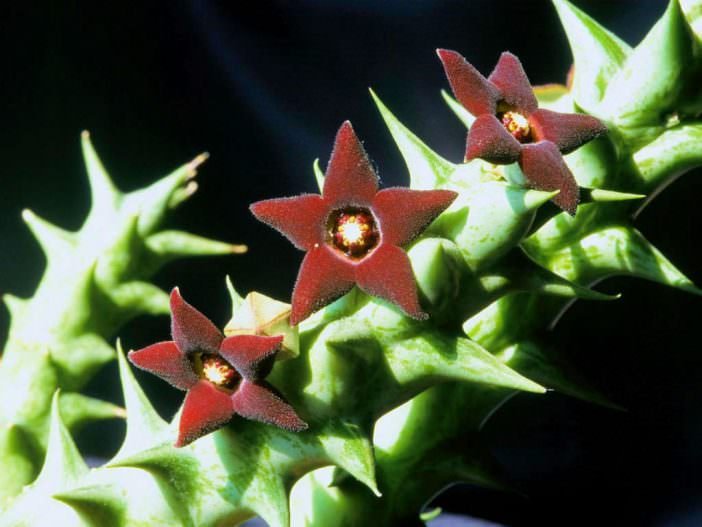This is one of my seeds. See my proyect on https://steemit.com/crowdfunding/@webocel/58kd3g-my-dream-needs-your-vote-crowdfunding
Scientific Name
Orbea decaisneana (Lem.) Bruyns
Common Names
Carrion Plant
Synonyms
Caralluma decaisneana, Angolluma decaisneana, Boucerosia decaisneana, Desmidorchis decaisneana, Pachycymbium decaisneanum, Stapelia decaisneana
Scientific Classification
Family: Apocynaceae
Subfamily: Asclepiadoideae
Tribe: Ceropegieae
Subtribe: Stapeliinae
Genus: Orbea
Description
Orbea decaisneana is a slender much-branched perennial succulent up to 8 inches (20 cm) tall, forming diffuse mats up to 20 inches (50 cm) in diameter. Stems are slender, cylindrical, slightly angled with conical protuberance, erect to decumbent, whitish green to grey-green, marbled or spotted with brown to purple, 3- to 6-ribbed, up to 16 inches (40 cm) long and up to 0.6 inch (1.5 cm) in diameter. The star-shaped flowers are up to 1 inches (2.5 cm) in diameter, and dark purple or reddish-brown in color.-

How to Grow and Care
Several species are fairly easy to grow. Others, often those with slightly hairy stems and the more unusual flowers, are more challenging and require careful watering (with some fertilizer) during the growing season and complete withdrawal of water during the winter months. A minimum winter temperature of 10°C (50°CF) is acceptable, providing that plants are kept absolutely dry.A heated growing bench or incubator may help delicate plants to get through the colder months. However, many species live under shrubs in habitat and prefer light shade rather than full sun. A gritty compost is essential, and clay pots are advisable for the more delicate species. Some growers prefer a mineral-only compost to minimize the chance of fungal attack on the roots. A layer of grit on the surface of the compost prevents moisture from accumulating around the base of the stems… – See more at: How to Grow and Care for Stapelia.
Origin
Native to Senegal, Mali, Morocco, Burkina Faso and Sudan.

